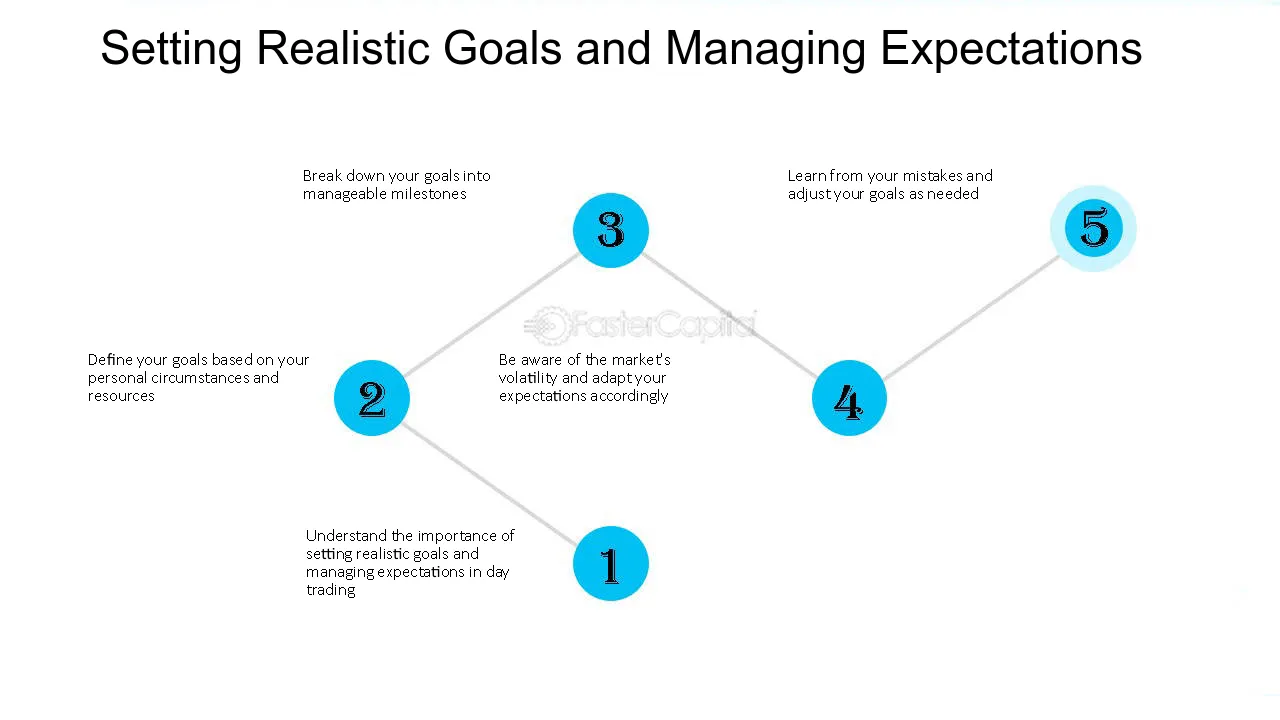Did you know that even professional day traders can have a higher failure rate than a cat trying to land on its feet? Mistakes are part of the game, but learning from them is what sets successful traders apart. This article delves into common day trading mistakes to avoid, offers strategies for identifying and analyzing errors, and emphasizes the importance of journaling for improvement. We'll explore psychological factors that contribute to mistakes, how to manage emotions, and the role of mentorship and backtesting in refining your skills. Plus, you'll discover tools for tracking errors and setting realistic goals. With insights from DayTradingBusiness, you’ll be better equipped to turn past missteps into future successes.
What are common day trading mistakes to avoid?
Common day trading mistakes to avoid include:
1. Overtrading: Trading too frequently can lead to losses and increased fees. Stick to a plan.
2. Ignoring Risk Management: Not using stop-loss orders or risking too much on a single trade can wipe out your account.
3. Chasing Losses: Trying to recover losses quickly often leads to bigger losses. Stay disciplined.
4. Lack of a Trading Plan: Trading without a clear strategy can result in impulsive decisions. Always have a plan.
5. Emotional Trading: Letting fear or greed drive your trades can cloud judgment. Keep emotions in check.
6. Neglecting Research: Failing to analyze stocks or market trends can lead to poor decisions. Stay informed.
7. Ignoring Fees and Taxes: Not accounting for commissions and taxes can erode profits. Factor these into your calculations.
8. Poor Timing: Entering or exiting trades at the wrong time can result in missed opportunities. Be patient and observant.
Learning from these mistakes involves reflecting on each misstep, adjusting your strategy, and maintaining discipline in your trading approach.
How can I identify my day trading mistakes?
To identify your day trading mistakes, start by reviewing your trading journal. Document every trade, including entry and exit points, reasons for taking the trade, and outcomes. Look for patterns in your losses—are you overtrading, ignoring stop losses, or chasing losses? Analyze your emotions during trades; fear or greed often leads to poor decisions. Seek feedback from trading communities or mentors who can provide insights. Regularly assess your strategies and adjust based on what’s not working. Finally, stay disciplined and patient; learning from mistakes is a continuous process.
What strategies help in learning from trading errors?
1. Review Your Trades: Regularly analyze your trades to identify mistakes. Document what went wrong and why.
2. Keep a Trading Journal: Log every trade, including your thought process, decisions, and outcomes. This helps in recognizing patterns in your errors.
3. Focus on Process, Not Just Results: Evaluate your trading strategy and decision-making process rather than just profit or loss. This shifts the emphasis to learning.
4. Set Specific Goals: Define clear, measurable objectives for improvement, such as reducing emotional trading or sticking to your plan.
5. Seek Feedback: Share your experiences with fellow traders or mentors to gain insights and alternative perspectives on your mistakes.
6. Practice Mindfulness: Cultivate awareness of your emotional triggers. Recognizing when emotions influence your decisions can help prevent future errors.
7. Simulate Trades: Use a demo account to practice strategies without financial risk. This allows you to learn from mistakes in a controlled environment.
8. Stay Educated: Continuously learn about market trends, strategies, and psychology. Knowledge helps prevent similar errors in the future.
9. Adjust Your Strategy: After identifying recurring mistakes, modify your trading strategy to mitigate those specific issues.
10. Be Patient: Understand that learning from mistakes takes time. Stay committed to your improvement journey.
How do I analyze my day trading performance?
To analyze your day trading performance, start by tracking each trade's entry and exit points, including the reasons behind your decisions. Use a trading journal to document your emotions, market conditions, and strategies. Review your win-loss ratio to identify patterns in successful trades versus losses. Assess your risk management techniques, including stop-loss placements. Regularly evaluate your performance over different time frames to spot trends. Finally, adjust your strategies based on your analysis, focusing on what works and what doesn't to improve future trades.
What role does journaling play in day trading improvement?
Journaling helps day traders analyze their decisions, track mistakes, and identify patterns. By recording trades, emotions, and outcomes, traders gain insights into what strategies work and what doesn’t. This reflection fosters accountability, enabling better risk management and decision-making. Over time, journaling cultivates discipline and clarity, ultimately improving overall performance in day trading.
How can I develop a better trading plan to minimize mistakes?

To develop a better trading plan and minimize mistakes, start by analyzing past trades to identify patterns in your errors. Establish clear entry and exit rules based on your analysis. Set specific risk management strategies, such as stop-loss and take-profit levels, to protect your capital. Create a daily trading journal to document decisions and emotions, allowing you to learn from mistakes. Stick to your plan and adjust only based on data, not emotions. Regularly review and refine your strategy based on performance.
What psychological factors contribute to trading mistakes?
Emotional decision-making is a key psychological factor contributing to trading mistakes. Fear can lead to hasty exits, while greed may cause overtrading or holding onto losing positions. Cognitive biases, like confirmation bias, can skew judgment, pushing traders to favor information that supports their beliefs. Additionally, lack of discipline often results in deviating from trading plans. Overconfidence can lead to underestimating risks, resulting in significant losses. Recognizing these psychological factors is crucial for learning from day trading mistakes and improving future performance.
How can I manage emotions while day trading?
To manage emotions while day trading, focus on these strategies:
1. Set a Trading Plan: Define your entry and exit points, risk management, and profit targets. Stick to this plan to minimize impulsive decisions.
2. Limit Position Sizes: Trade smaller amounts to reduce emotional pressure and avoid significant losses.
3. Take Breaks: Step away after a losing trade to clear your mind and regain composure.
4. Practice Mindfulness: Use techniques like deep breathing or meditation to stay calm during volatile market conditions.
5. Keep a Trading Journal: Record your trades and emotions to identify patterns and learn from mistakes.
By implementing these strategies, you can effectively manage your emotions and improve your day trading performance.
What tools can assist in tracking day trading mistakes?
To track day trading mistakes, use tools like trading journals (e.g., Edgewonk, Tradervue) for detailed analysis. Consider performance tracking software like TraderSync for metrics on trades. Utilize platforms with built-in analytics, such as Thinkorswim or TradingView, to review trade history and identify patterns. Finally, engage with community forums or mentorship programs for peer feedback on your strategies.
How can I set realistic goals for day trading?

To set realistic goals for day trading, start by assessing your risk tolerance and capital. Aim for achievable profit targets, like 1-2% of your trading capital per day. Keep your goals specific, measurable, and time-bound. For instance, plan to make a certain number of successful trades each week. Analyze past performance to identify what’s reasonable based on your experience and market conditions. Finally, be flexible; adjust your goals as you learn from mistakes and improve your strategies.
Learn about How to Set Realistic Goals in Day Trading
What are some effective ways to recover from trading losses?
1. Analyze Your Trades: Review losing trades to identify patterns or mistakes. Look for common factors in your decisions.
2. Adjust Your Strategy: Modify your trading strategy based on your analysis. Focus on what works and eliminate what doesn’t.
3. Set Realistic Goals: Establish achievable trading goals to avoid overextending yourself and to build confidence.
4. Practice Risk Management: Use stop-loss orders and limit your position sizes to protect your capital in future trades.
5. Take Breaks: Step away from trading to clear your mind. A fresh perspective can help you make better decisions.
6. Educate Yourself: Invest time in learning about trading techniques and market analysis. Continuous education can prevent future mistakes.
7. Keep a Trading Journal: Document your trades, including your thoughts and feelings. This helps you recognize emotional triggers that lead to losses.
8. Stay Disciplined: Stick to your trading plan and avoid impulsive decisions based on emotions or market noise.
How can I use past mistakes to improve future trades?
Analyze your past trades to identify specific mistakes, like poor entry points or emotional decisions. Keep a trading journal to document these errors and your thought process. Review this regularly to spot patterns. Set clear rules for future trades based on your findings. Use each mistake as a learning opportunity to refine your strategy and improve your decision-making. Embrace a growth mindset—view mistakes as stepping stones to better trading outcomes.
How Can I Learn from My Day Trading Mistakes?
Day trading involves buying and selling financial instruments within the same trading day, aiming to capitalize on short-term price movements. To learn from day trading mistakes, analyze your trades, identify patterns in your losses, keep a trading journal, and continuously educate yourself on market trends and strategies.
Learn more about: What is Day Trading?
What are the benefits of mentorship in day trading?
Mentorship in day trading offers several key benefits. First, mentors provide personalized guidance, helping you understand complex strategies and concepts. They can share their own experiences, teaching you to avoid common pitfalls and mistakes. This real-world insight accelerates your learning curve and builds confidence.
Additionally, a mentor can offer emotional support, helping you manage stress and maintain discipline during volatile markets. They can also hold you accountable, ensuring you stick to your trading plan. Overall, mentorship enhances your skills, knowledge, and mindset, significantly improving your chances for success in day trading.
How does backtesting help in learning from mistakes?
Backtesting allows traders to analyze past trades and strategies, highlighting mistakes and successes. By reviewing historical data, you can pinpoint where decisions went wrong, such as entry or exit points. This process helps in understanding patterns, refining strategies, and avoiding similar errors in the future. For example, if a specific setup consistently leads to losses, you can adjust your approach accordingly. Ultimately, backtesting turns past mistakes into valuable learning experiences, enhancing your day trading skills.
What resources can I use to educate myself about trading errors?

To educate yourself about trading errors, start with books like "Trading in the Zone" by Mark Douglas and "The Disciplined Trader." Online platforms like Investopedia and BabyPips offer articles and courses on common day trading mistakes. YouTube channels focusing on trading psychology can provide real-life examples. Join trading forums like Trade2Win or Reddit’s r/Daytrading for community insights. Finally, consider using trading simulators to practice and analyze your mistakes in a risk-free environment.
How can other traders help me learn from my mistakes?
Other traders can help you learn from your mistakes by sharing their experiences and insights. Join trading forums or groups where you can discuss your trades and get feedback. Seek mentorship from experienced traders who can analyze your mistakes and provide constructive criticism. Participate in trading simulations or shadow trading sessions to observe different strategies. Regularly review your trades with peers to identify patterns and learn alternative approaches. Engage in open discussions about common pitfalls to broaden your understanding.
Conclusion about How to Learn from Day Trading Mistakes
Learning from day trading mistakes is essential for long-term success in the market. By identifying common pitfalls, analyzing performance, and utilizing tools like journaling, traders can refine their strategies and improve decision-making. Setting realistic goals and managing emotions are crucial in minimizing errors. Additionally, mentorship and backtesting can provide valuable insights. With the right approach and resources, traders can transform past mistakes into stepping stones for future achievements. Embrace these learning opportunities to enhance your trading journey with the guidance of DayTradingBusiness.
Learn about Common Mistakes in Day Trading Scalping and How to Avoid Them
Sources:
- Women and Trading: Currencies, Commodities, and Crypto | CFA ...
- Wind power forecasting using ensemble learning for day-ahead ...
- What do retail FX traders learn? - ScienceDirect
- Do Individual Day Traders Make Money? Evidence from Taiwan
- Unraveling the Dynamics of SPY Trading Volumes: A ...
- The price discovery role of day traders in futures market: Evidence ...